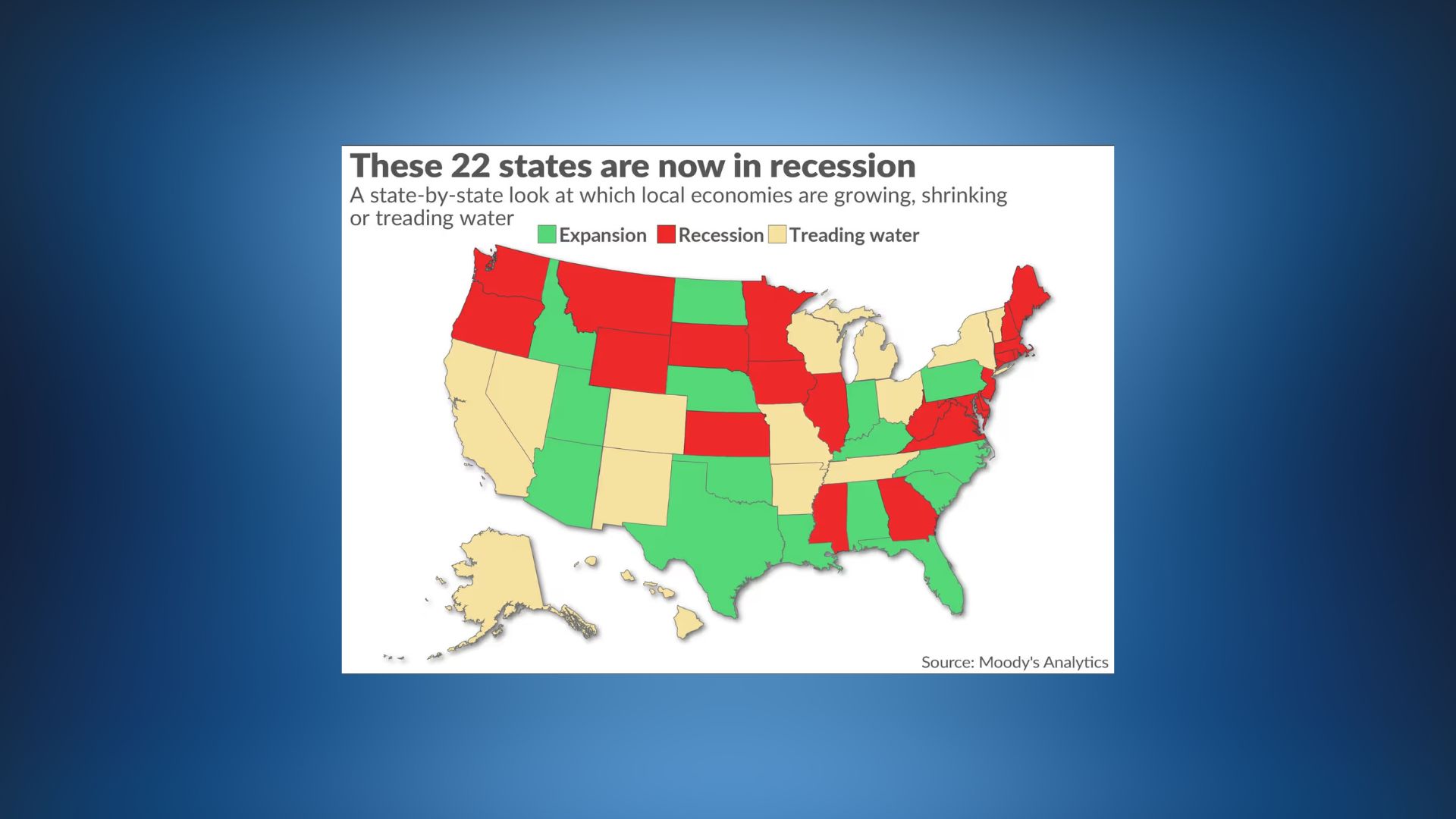In a striking assessment from Mark Zandi, the chief economist at Moody’s Analytics, it has been revealed that 21 states, along with the District of Columbia, are currently grappling with recession or are precariously positioned at its edge. This alarming situation highlights a significant segment of the U.S. GDP that appears to be struggling in a turbulent economic climate.
Compounding these issues is Congress’s recent failure to enact twelve essential appropriations bills, which has resulted in a government shutdown. Approximately 800,000 federal employees have found themselves furloughed without pay, and the economic fallout from this shutdown is projected to reach a staggering $1 billion daily. Such governmental incompetence only deepens the economic struggles faced by many states across the nation. Eventually the issue has to be resolved or it will hit home.
In addition to those in recession, thirteen states—including Tennessee—are merely managing to keep their heads above water. On the other hand, states like Wyoming, Montana, Minnesota, and Mississippi are experiencing significant economic distress, creating a bleak tableau of fiscal instability. Conversely, a handful of states, such as South Carolina and Texas, are still managing to achieve slow growth, albeit at a frustratingly sluggish pace.
Several factors are driving this economic turmoil, including federal job cuts, the imposition of tariffs, and a lackluster housing market. Zandi ominously warns that we face a 49% likelihood of entering a recession within the next year. Compounding this dire situation is recent job growth, which has averaged a mere 35,000 jobs per month—a figure that hardly suffices to maintain economic stability.
Turning our attention to Tennessee, the state has experienced a remarkable increase in its budget, soaring by $16.3 billion since 2020, largely due to an influx of federal funds. However, while the proposed budget for fiscal year 2024 reached an ambitious $62.5 billion, the actual enacted budget of $56.2 billion suggests a more cautious approach. With per capita spending at $7,100, Tennessee finds itself in the mid-tier of economic performance, could strain future revenue streams.
Looking forward, projections for fiscal years 2025–2026 indicate a modest growth rate of 2–3%, which is hardly thrilling. As Tennessee navigates this complex fiscal landscape, it must strike a balance between ambitious goals and sound financial stewardship.
The economic outlook is far from clear, presenting a murky picture for both those in states on the brink of recession and those merely treading water. It is wise to remain observant and prudent with your finances, as we may very well find ourselves embarking on an economic journey that none of us anticipated.


















